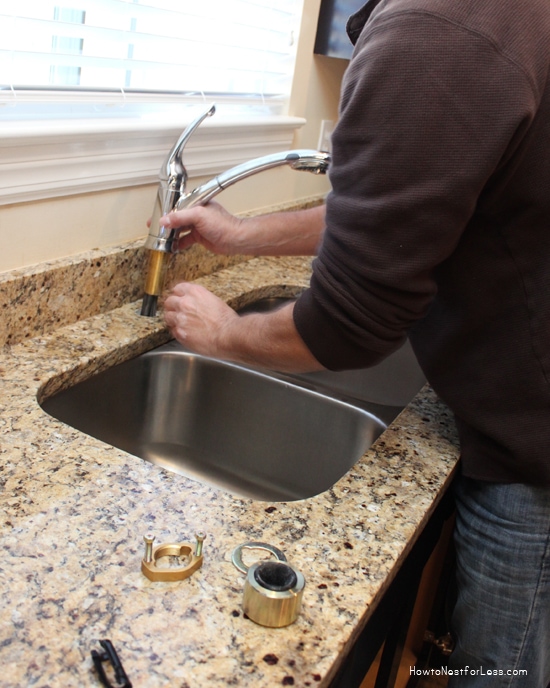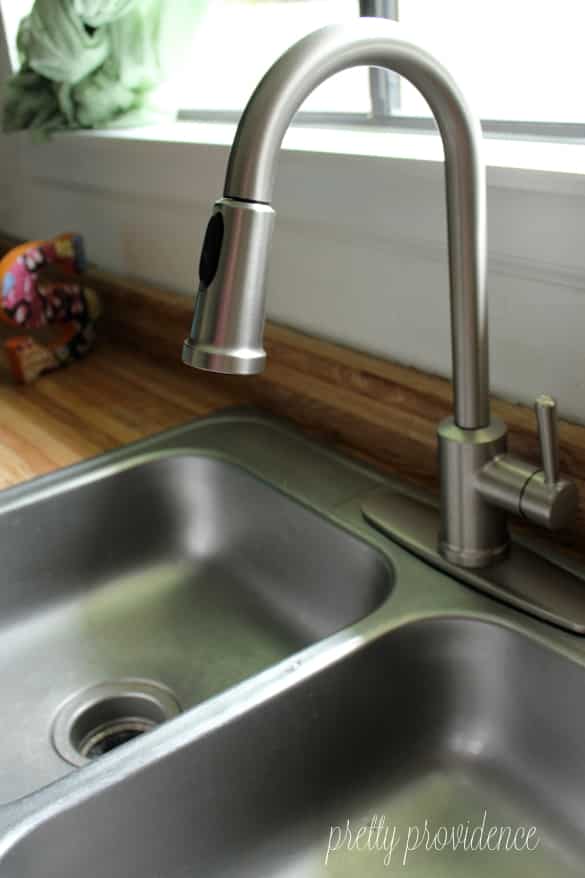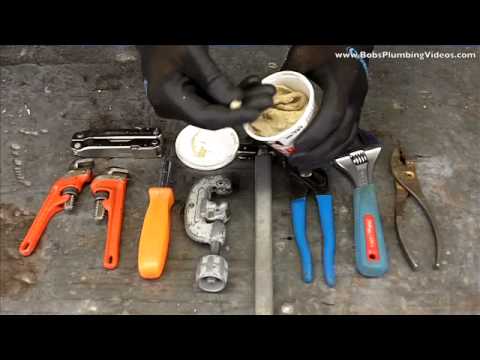Installing a new kitchen faucet can significantly enhance the functionality and aesthetics of your kitchen. Whether you are upgrading your existing faucet or installing one for the first time, understanding the cost and factors involved is crucial. Today we will cover different aspects of kitchen faucet installation, from cost breakdowns and types of faucets to installation processes and common mistakes to avoid.

Cost Breakdown of Kitchen Faucet Installation
Basic Installation Costs
The cost to install a new kitchen faucet can vary widely depending on several factors. On average, you can expect to pay between $150 and $400 for a basic installation, which includes both labor and materials. This range covers the cost of hiring a professional plumber, which is typically between $50 and $200 per hour. The time required for installation can vary but usually takes between one and two hours.
The cost of the faucet itself is another significant factor. Basic models can start as low as $50, while high-end designer faucets can exceed $1,000. The choice of faucet will depend on your budget, kitchen decor, and personal preferences. It’s essential to select a faucet that not only fits your aesthetic needs but also matches your sink’s configuration (e.g., the number of holes).
Additional costs may arise if any modifications to your plumbing are necessary. For instance, if the new faucet requires different connections or if your existing plumbing needs repairs or upgrades, the overall cost can increase. These modifications can add an extra $50 to $150 to the total cost, depending on the complexity of the work.
Some homeowners might consider DIY installation to save on labor costs. While this can reduce expenses, it’s important to have the necessary skills and tools to ensure a proper installation. Mistakes during a DIY installation can lead to leaks and water damage, potentially costing more in the long run.
Another cost consideration is removing and disposing of the old faucet. If you hire a professional, this service is often included in the installation fee. However, it’s a good idea to confirm this with your plumber to avoid any unexpected charges. Disposal fees can range from $10 to $30 depending on local regulations and the plumber’s policies.

Factors Affecting Installation Costs
Several factors can influence the overall cost of installing a new kitchen faucet. One of the primary factors is the type of faucet you choose. Standard faucets are generally less expensive to install compared to more complex models like pull-out or touchless faucets. The complexity of the faucet often correlates with the installation difficulty and time required.
The condition of your existing plumbing is another crucial factor. If your plumbing system is outdated or in poor condition, it may need to be repaired or replaced to accommodate the new faucet. This can significantly increase the installation cost. Additionally, if your plumbing configuration does not match the new faucet, adapters or modifications might be necessary.
The location of the faucet installation also plays a role in determining the cost. If the faucet is to be installed in a difficult-to-access area or if additional holes need to be drilled in the sink or countertop, this can add to the labor time and cost. Kitchen islands, for instance, may require more complex plumbing work compared to wall-mounted sinks.
Geographical location can also impact the cost. Labor rates for plumbers vary by region, with urban areas generally having higher rates compared to rural areas. It’s advisable to obtain quotes from multiple plumbers in your area to ensure you are getting a competitive rate.
Another factor to consider is whether you are installing a faucet as part of a larger kitchen renovation. In such cases, the overall cost might be reduced if the plumber is already working on other parts of your kitchen. However, if the faucet installation is a standalone project, the costs might be higher due to the minimum service fees charged by plumbers.
Finally, the brand and warranty of the faucet can affect the cost. Higher-end brands with extended warranties may have a higher upfront cost but can offer long-term savings by reducing the likelihood of future repairs or replacements. It’s important to balance initial costs with potential long-term benefits when choosing a faucet.

Types of Kitchen Faucets
There are various types of kitchen faucets available, each with its own set of features, benefits, and installation costs. Understanding the different types can help you make an informed decision that fits your needs and budget.
Single-Handle Faucets: These are among the most common types and feature a single lever to control both water temperature and flow. They are typically easier and less expensive to install, making them a popular choice for many homeowners.
Double-Handle Faucets: These faucets have separate handles for hot and cold water, providing more precise temperature control. While they can be slightly more challenging to install due to the need for multiple connections, they offer a classic look and are often found in traditional kitchen designs.
Pull-Out and Pull-Down Faucets: These faucets feature a detachable spray head that can be pulled out or down for extended reach and flexibility. They are ideal for tasks like rinsing vegetables or cleaning the sink. The installation cost for these faucets can be higher due to their complexity and additional parts.
Touchless Faucets: Equipped with motion sensors, touchless faucets allow for hands-free operation, making them a hygienic and convenient option. These faucets often require an electrical connection, which can add to the installation cost. They are typically more expensive than standard faucets but offer advanced features and convenience.
Pot Filler Faucets: Typically installed near the stove, pot filler faucets are designed to fill large pots with water. They are often used in professional kitchens and can be a luxurious addition to home kitchens. Installation can be more complex and costly due to the need for additional plumbing connections.
Commercial-Style Faucets: These faucets mimic the design and functionality of those found in commercial kitchens, featuring high-arc spouts and powerful spray heads. They are suitable for heavy-duty use and can handle large pots and pans. Installation costs can be higher due to their size and complexity.
:max_bytes(150000):strip_icc()/delta_kitchen_faucet-56a73ba55f9b58b7d0e8107d.jpg)
Installation Process
The installation process for a new kitchen faucet involves several steps, each requiring careful attention to detail to ensure a proper fit and function. Here’s an overview of the typical installation process:
Preparation: The first step is to gather all necessary tools and materials. This includes the new faucet, adjustable wrench, basin wrench, plumber’s tape, and any additional components required for the installation. It’s also important to turn off the water supply to the sink to prevent any leaks during the installation process.
Removing the Old Faucet: If replacing an existing faucet, the old faucet must be removed first. This involves disconnecting the water supply lines and using a basin wrench to loosen the mounting nuts holding the faucet in place. Once the old faucet is removed, the area should be cleaned to remove any debris or old plumber’s putty.
Installing the New Faucet: The new faucet is then positioned in the mounting holes of the sink or countertop. Most faucets come with detailed installation instructions, so it’s important to follow these closely. The mounting hardware is secured, and the faucet is tightened to ensure a stable installation.
Connecting Water Supply Lines: The hot and cold water supply lines are then connected to the corresponding inlets on the faucet. The plumber’s tape should be used on the threads to ensure a watertight seal. Once the connections are made, the water supply can be turned back on, and the faucet should be checked for any leaks.
Installing Additional Features: If the faucet includes additional features like a pull-out spray head or touchless sensors, these components should be installed according to the manufacturer’s instructions. This may involve connecting additional hoses or wiring, depending on the type of faucet.
Final Inspection: The final step is to test the faucet to ensure it is functioning correctly. Check for proper water flow, temperature control, and any leaks. Make any necessary adjustments to ensure the faucet operates smoothly and efficiently.

Benefits of Professional Installation
While some homeowners may opt for a DIY approach to save on costs, there are several benefits to hiring a professional plumber for the installation of a new kitchen faucet.
Expertise and Experience: Professional plumbers have the expertise and experience to handle a wide range of faucet installations. They are familiar with different types of faucets and can quickly identify and resolve any issues that may arise during installation.
Proper Tools and Equipment: Professionals come equipped with the necessary tools and equipment to ensure a smooth and efficient installation. This reduces the risk of damage to the faucet or plumbing system and ensures a secure and stable installation.
Time Savings: Hiring a professional can save you time and effort. They can complete the installation quickly and efficiently, allowing you to enjoy your new faucet sooner. This is particularly beneficial for complex installations that may require additional plumbing work.
Warranty and Guarantees: Many professional plumbers offer warranties or guarantees on their work. This provides peace of mind knowing that if any issues arise after the installation, the plumber will address them at no additional cost. This can be especially important for high-end or complex faucet installations.
Code Compliance: Professional plumbers are knowledgeable about local building codes and regulations. They can ensure that the installation complies with all relevant codes, preventing potential issues with inspections or future home sales.
Problem Prevention: Professionals can identify and address potential problems that may not be apparent to the average homeowner. This includes issues with existing plumbing, such as leaks or corrosion, that could affect the performance and longevity of the new faucet.

Common Mistakes to Avoid
Choosing the Wrong Faucet
One common mistake when installing a new kitchen faucet is choosing a faucet that does not fit your sink’s configuration or your kitchen’s design. It’s essential to consider the number of holes in your sink or countertop, as well as the faucet’s height and reach. Selecting a faucet that is incompatible with your sink can lead to installation issues and additional costs.
To avoid this mistake, carefully measure your sink and consider the existing holes. Most sinks have between one and four holes, and the faucet you choose must match this configuration. Additionally, consider the faucet’s dimensions to ensure it fits comfortably in your sink area without obstructing cabinets or windows.
Skipping the Shut-Off Valve Check
Another common mistake is failing to check the shut-off valves before starting the installation. If the shut-off valves are old or faulty, they may not function properly, leading to water leaks during the installation process. It’s crucial to ensure that the shut-off valves are in good working condition to prevent any water damage.
Before starting the installation, turn off the shut-off valves and check for any leaks. If the valves are not functioning correctly, they should be replaced before proceeding with the faucet installation. This small step can save you from potential water damage and additional repair costs.
Ignoring Manufacturer Instructions
Ignoring the manufacturer’s instructions is another mistake that can lead to installation issues. Each faucet model may have specific installation requirements, and failing to follow these instructions can result in improper installation and potential damage to the faucet or plumbing system.
Always read and follow the manufacturer’s instructions carefully. This includes using the recommended tools and materials, as well as following the step-by-step installation process. If you are unsure about any part of the installation, consult the manufacturer’s customer support or hire a professional plumber.

Using the Wrong Tools
Using the wrong tools for the installation can lead to damage and poor results. For example, using pliers instead of a basin wrench to tighten connections can cause scratches and damage to the faucet’s finish. It’s important to use the correct tools to ensure a smooth and successful installation.
Invest in or borrow the necessary tools for the job, such as a basin wrench, adjustable wrench, and plumber’s tape. Using the right tools will make the installation process easier and help prevent damage to the faucet and plumbing system.
Over-Tightening Connections
Over-tightening connections is a common mistake that can damage the faucet and plumbing components. While it’s important to ensure a secure connection, over-tightening can cause threads to strip or crack, leading to leaks and potential water damage.
When tightening connections, follow the manufacturer’s recommendations for the appropriate level of tightness. Hand-tighten connections first, then use a wrench to make a quarter-turn more if needed. Avoid using excessive force to prevent damage.
Not Checking for Leaks
Failing to check for leaks after installation is another common mistake. Even if the installation appears to be successful, small leaks can develop over time, leading to water damage and mold growth. It’s important to thoroughly inspect all connections for leaks before considering the installation complete.
After turning the water supply back on, carefully check all connections and joints for any signs of leaks. Use a dry cloth to wipe around the connections and observe for any moisture. If you detect any leaks, tighten the connections slightly and recheck until the leaks are resolved.

How much does it cost to install a new kitchen faucet?
The cost to install a new kitchen faucet typically ranges from $150 to $400, including both labor and materials. The exact cost can vary depending on factors such as the type of faucet, the condition of your existing plumbing, and your geographical location. Basic faucets are more affordable to install, while complex models like touchless or pull-down faucets may cost more due to their complexity.
Can I install a kitchen faucet myself?
Yes, it is possible to install a kitchen faucet yourself if you have the necessary skills and tools. DIY installation can save on labor costs, but it requires careful attention to detail to ensure a proper fit and function. If you are not confident in your plumbing skills, it’s advisable to hire a professional plumber to avoid potential issues and ensure a successful installation.
What factors affect the cost of installing a new kitchen faucet?
Several factors can affect the cost of installing a new kitchen faucet, including the type of faucet, the condition of your existing plumbing, the location of the installation, and your geographical area. The complexity of the faucet, such as touchless models or those requiring additional plumbing modifications, can also increase the installation cost. It’s important to obtain quotes from multiple plumbers to ensure you are getting a competitive rate.
How long does it take to install a kitchen faucet?
The installation of a kitchen faucet typically takes between one and two hours. The exact time can vary depending on the type of faucet and any additional plumbing work required. For example, installing a standard single-handle faucet is usually quicker than installing a touchless faucet with additional features. If any modifications to the existing plumbing are needed, the installation time may be longer.
Do I need a plumber to install a new kitchen faucet?
While it is possible to install a new kitchen faucet yourself, hiring a professional plumber is recommended for the best results. Professional plumbers have the expertise, tools, and experience to handle a wide range of faucet installations and can quickly identify and resolve any issues. They can ensure a proper fit and function, as well as compliance with local building codes and regulations. Hiring a professional can also provide peace of mind, knowing that the installation is covered by warranties or guarantees.

How to Install a New Kitchen Faucet Without A Plumber

Creating leverage at the kitchen sink Follow Toto

Kitchen Faucet Recommendations? – Plumbing – DIY Home Improvement

Our New Kitchen Countertops and Gorgeous Quartz Sink!

Related Posts:
- How To Replace Kitchen Faucet Sprayer Hose
- Mr Direct Kitchen Faucets
- Delta Linden Kitchen Faucet Stainless
- Replace Delta Kitchen Faucet
- How To Install Kitchen Faucet On Granite Countertop
- Kohler Sous Pull Down Kitchen Faucet
- Pull Down Kitchen Faucet Hose
- Hot Water Not Coming Out Of Kitchen Faucet
- Delta Lewiston Stainless Steel Kitchen Faucet
- Kitchen Faucet Handle Replacement Parts